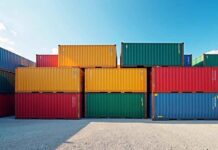Non-corrugated boxes have become a popular option for companies looking for lightweight, affordable, and adaptable packaging solutions in today’s competitive packaging market. Non-corrugated boxes are made without the fluted or ribbed layer that gives them strength and longevity, in contrast to their corrugated counterparts.
Because they are composed of materials like paperboard, cardboard, and plastic, these boxes are perfect for a variety of uses where appearance and economy are more important than robust protection.
The size of the non-corrugated box market worldwide was estimated at USD 67.22 billion in 2024 and is expected to grow at a compound annual growth rate (CAGR) of 7.5% to reach around USD 137.79 billion by 2034. The demand for non-corrugated boxes rose as a result of the growing popularity of upscale gift boxes.
Non-Corrugated Boxes: What Are They?
The inside layer of fluted paper that is present in corrugated boxes is absent from non-corrugated boxes, which are packaging containers composed of a single layer of material, such as cardboard, paperboard, or plastic. These boxes are lighter and less clunky due to the absence of the fluted layer, making them a desirable choice for situations where durability is not a crucial consideration. In the production of non-corrugated boxes, common materials include:
- Paperboard: Often used to package tiny devices, food, and cosmetics that are lightweight.
- Plastic: Provides durability and resistance to moisture, making it appropriate for objects that require extra protection.
- Cardboard: Adaptable and reasonably priced, ideal for gift or promotional packaging.
These boxes are especially helpful for packaging consumer items like electronics, food, and cosmetics, when the packaging’s main function is to improve appearance rather than offer robust protection. Additionally, because they are simple to print and customize, non-corrugated boxes are frequently chosen for gift or promotional packaging.
This is anticipated to fuel the market expansion for non-corrugated boxes throughout the projected decade.
Non-corrugated boxes are commonly used for retail packaging where aesthetics are a concern. High-quality printing, embossing, and other design elements may easily enhance the product’s visual appeal and branding. Corrugated boxes are usually more expensive to produce than non-corrugated boxes, such as those made of paperboard or thin cardboard.
They could be a more appealing choice for businesses looking to cut their packaging expenses because of their affordability. The size of the worldwide packaging industry is projected to increase at a compound annual growth rate (CAGR) of 3.16% from 2023 to 2032, from an estimated USD 1.20 trillion in 2022 to USD 1.58 trillion by 2032.
Non-corrugated boxes are used in the retail packaging of many consumer items, such as food, cosmetics, and electronics. These boxes provide a great balance between protection and exhibition. In line with environmental objectives, a large number of non-corrugated boxes are constructed from recyclable materials.
Eco-friendly packaging options are becoming more and more important to businesses and consumers. Overall, non-corrugated materials have better sales, especially for retail and consumer items, due to a combination of their cheaper prices, attractive and appealing presentation, and practicality.
Principal Benefits of Non-Corrugated Boxes
- Cost Efficiency: Because their production procedures are simpler, non-corrugated boxes are often less expensive to create than corrugated boxes. Production time and material costs are decreased by using fewer materials and without using a fluted layer.
- Lightweight Design: Non-corrugated boxes are a great option for e-commerce companies looking to cut down on logistical costs because of its lightweight design, which also results in less shipping costs.
- Customizability: Because non-corrugated boxes are simpler to print and modify, companies may improve the look of their packaging and produce original designs that complement their marketing plans.
- Sustainability: As environmental concerns develop, a lot of non-corrugated boxes are constructed from recyclable materials, which lessens their environmental impact and appeals to consumers who care about the environment.
- Improved Aesthetics: Non-corrugated boxes provide a smooth and clean surface that is perfect for fine printing, embossing, and other creative techniques for items where aesthetic appeal is crucial.
Rapid Industrialization in Asia: To Take the Lead
Over the course of the projected period, the Asia Pacific region is anticipated to increase at the quickest rate. Modern retail formats and rapid urbanization are driving up demand for smart packaging solutions that can draw customers and improve the shopping experience. The need for packaging that improves product presentation and offers a better unpacking experience has increased as a result of the Asia Pacific region’s e-commerce growth.
Online retailers frequently employ non-corrugated boxes for their luxury packaging. The desire for better-quality and more visually beautiful packaging is being driven by Asia Pacific’s expanding middle class and rising disposable incomes.
Growth of Food Services: Possible Increase in North America
During the projection period, the non-corrugated box market is expected to develop at the quickest rate in North America. Demand for non-corrugated packing boxes, which are frequently utilized for specialized and high-end packaging demands, has increased due to the rise in North American internet shopping. An increasing number of people are choosing beautiful, high-quality packaging. Because of their improved durability and beauty, non-corrugated boxes—like those composed of stiff paperboard—are frequently used.
Important Elements Fueling the Market for Non-Corrugated Boxes
- Regulatory Support for Sustainable Packaging: Environmentally friendly packaging materials are being promoted by governments all over the world. These restrictions are in line with non-corrugated boxes made of recyclable paperboard or biodegradable polymers, which propels market expansion.
- Put an emphasis on Production Efficiency and Cost Reduction: As companies look to save expenses, there is a growing need for affordable packaging options, such as non-corrugated boxes. Significant material, production, and transportation cost benefits are provided by these boxes.
- Geographic Expansion and Global Reach: In order to access rising markets, major market participants are extending their activities to new geographic areas. As companies seek to provide customized packaging solutions to a wide range of customers, this development is anticipated to increase demand for non-corrugated boxes.
- Government Policies Promoting Innovation: It is anticipated that the market for non-corrugated boxes will expand as a result of new government regulations that encourage package innovation and equipment monitoring. This covers incentives, tax breaks, and subsidies for businesses who spend money on eco-friendly packaging.
- Adoption of Inorganic Growth techniques: In order to diversify their product offerings, businesses are increasingly turning to inorganic growth techniques such as mergers and acquisitions. The creation of novel non-corrugated box designs and materials as a result of this trend has fueled industry expansion.
Growing Trend in the Gift Packaging and Custom Packaging Solutions Sector
Custom packaging that embodies their corporate identity is becoming more and more popular among businesses. Excellent chances for distinctive and branded package designs are presented by non-corrugated boxes. Non-corrugated boxes, which are frequently used for special events and high-end gifts, have an opportunity due to the desire for distinctive and superior gift wrapping.
There is a growing need for superior packaging that improves the consumer experience due to the growing e-commerce sector. This is a good usage for non-corrugated boxes, which are frequently used for high-end and luxury goods. Brands are investing in packaging that offers a high-end and unforgettable unpacking experience, utilizing non-corrugated boxes, as unwrapping becomes an important aspect of the customer experience.
The industry’s major players are expanding their operations by providing personalized gift packaging made of non-corrugated boxes, which is expected to generate significant development potential for the non-corrugated boxes market during the projected period.

























